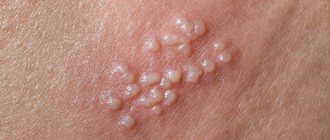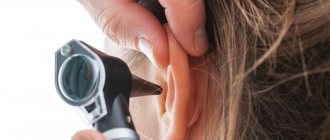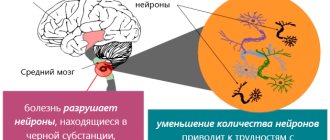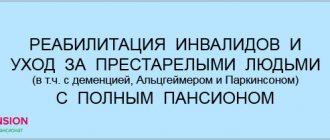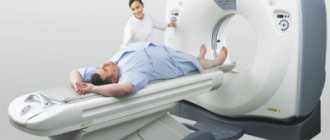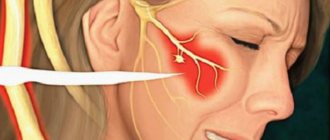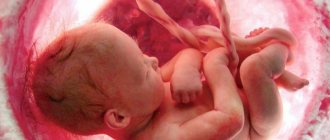Description and causes of postherpetic pain
Postherpetic pain (or postherpetic neuralgia) occurs as a result of a previous shingles infection caused by the Herpes Zoster virus.
When the virus enters the body for the first time, it causes chickenpox, but after recovery it does not disappear, but circulates in the body for life and can be reactivated when the immune system is weakened (HIV infection, taking immunosuppressants, aging of the body). The virus affects the spinal ganglia and cranial nerves. Clinically, the disease manifests itself as pain along the affected dermatome (an area of skin innervated by an infected nerve), impaired sensitivity, and blistering rashes on an erythematous background. Most often, the pain goes away after the disease subsides, but in some cases it remains persistent.
The pain can be of different types:
- constant, unabating, burning, pulling, pressing,
- "shooting"
- a burning sensation that occurs when you touch the affected area.
Postherpetic neuralgia
Chicken pox
Herpes
2634 17 September
IMPORTANT!
The information in this section cannot be used for self-diagnosis and self-treatment.
In case of pain or other exacerbation of the disease, diagnostic tests should be prescribed only by the attending physician. To make a diagnosis and properly prescribe treatment, you should contact your doctor. Postherpetic neuralgia: causes, symptoms, diagnosis and treatment methods.
Definition
Postherpetic neuralgia is pain or abnormal sensory sensations associated with damage to the nervous system by the varicella zoster virus.
Causes of postherpetic neuralgia
After suffering from chickenpox (chickenpox), the human herpes virus type 3 - Varicella zoster virus
-
from rashes on the skin and mucous membranes can move to the sensory ganglia (nodes consisting of a cluster of neurons) of the spinal nerves of the thoracic, lumbar or trigeminal levels nerve.
There, the virus is able to remain in a latent (inactive) state for decades. When immunity is reduced (for example, against the background of viral diseases, chemotherapy, cancer, therapy with glucocorticosteroid hormones for systemic connective tissue diseases (rheumatic diseases)), the virus can be activated and cause the development of herpes zoster (herpes zoster )
or trigeminal neuralgia.
The disease begins with one-sided pain, a burning sensation, increased skin sensitivity, after which, sometimes after 1-2 weeks, redness appears, and then blistering rashes on the skin. In 50% of patients, the rashes are localized on the torso (usually along the intercostal spaces at the level of the thoracic spine, sometimes in the lumbar region, sacrum), in 20% - on the head (if the trigeminal nerve is damaged, damage to the eyes and ears is possible), in 15% - on the arms, and 15% - on the legs. In most cases, over time, the pain goes away on its own - recovery occurs after 2-3 weeks, but sometimes (in about 20% of patients) a complication of herpes zoster develops - postherpetic neuralgia.
Postherpetic neuralgia is rarely seen in children and young adults, but its incidence increases significantly in old age.
The real prevalence of postherpetic neuralgia is unknown, since there is no consensus on the time interval between rashes, the onset of pain and the duration of the pain syndrome.
Classification of postherpetic neuralgia
A number of authors propose to distinguish three temporary phases of pain associated with Herpes zoster
.
- Acute herpetic neuralgia, in which pain lasts up to 30 days from the onset of the rash.
- Subacute herpetic neuralgia, lasting 30-120 days after the onset of the rash.
- Postherpetic neuralgia, in which pain persists more than 120 days after the onset of the rash.
Most patients recover completely within one year after the onset of pain, but for some, pain persists for years.
Symptoms of postherpetic neuralgia
The main complaint of patients is pain. It is characterized by varying intensity and frequency - from mild to extremely painful, from short-term to permanent. With herpes zoster, pain can spread beyond the localization of the rash. In the clinical picture of postherpetic neuralgia, the following types of pain can be distinguished:
- constant pain, which patients describe as dull, pressing or burning;
- paroxysmal (paroxysmal) pain that occurs suddenly, sharp, shooting, piercing;
- Allodynia is pain that occurs in response to even very mild stimuli that under normal circumstances do not cause pain, for example, a light touch with a cold hand.
Patients often report constant fatigue, lack of appetite, decreased mood, and sleep disturbances.
Some patients complain of intense itching, which is usually localized in the head and neck area.
Diagnosis of postherpetic neuralgia
At the onset of herpes zoster, when patients are only concerned about pain, the doctor may suspect heart disease, intercostal neuralgia, or osteochondrosis. However, with the appearance of rashes, the diagnosis becomes obvious.
The persistence of pain after the rash resolves indicates postherpetic neuralgia.
Instrumental and laboratory diagnostics, as a rule, are not carried out.
In atypical cases, a serological test 256 may be prescribed in combination with test No. 257 (IgM antibodies) to diagnose chickenpox. In addition, these studies may be needed to assess immunity to the virus.
Diagnosis of pain
The diagnosis of postherpetic neuralgia is made based on the patient’s complaints, history and clinical picture. For confirmation, PCR is performed to detect the DNA of the herpes virus.
Treatment of pain with postherpetic neuralgia is carried out in the following areas:
Pain from postherpetic neuralgia exhausts patients and reduces quality of life. Long-term pain syndrome causes depression, anxiety, decreased concentration, weight loss, and limitation of physical and social activity. It is necessary not to endure pain, but to treat it promptly and effectively.
Description of the disease
The disease is characterized by the fact that it occurs even when the shingles itself has already been cured, and can appear even in places where there were no herpes lesions.
Most often, people aged 60 years suffer from this pathology. The disease is considered a secondary pathology and occurs due to provoking factors, which are:
- old age - this disease mainly affects people over 60 years of age and only 10% of patients experience neuralgia after lichen lesions;
- weakened immune physiology;
- herpes rashes;
- skin soreness - the higher it is with lichen, the more likely postherpetic neuralgia will appear;
- delayed intake of medications for the treatment of herpes rashes.
Causes and risk factors
The etiological factor leading to the development of postherpetic neuralgia is the herpes virus – varicellazoster. The mechanism of pain is not fully known. One theory is the occurrence of an immune-mediated reaction, as a result of which the body reacts aggressively to the cells of its own body, perceiving them as foreign agents.
As a result, irritation and swelling of nerve fibers occur, and the functioning of pain receptors changes. All this gives rise to characteristic attacks of neuropathic pain - they can easily be described with a capacious, sonorous word, for example, “burning”, “stabbing”. This is characteristic of nerve damage.
A well-established risk factor for the development of postherpetic neuralgia is advanced age. In such patients, the pain syndrome is observed even before the appearance of the rash, and is so pronounced that the doctor has to rule out a heart attack, renal colic, or an attack of cholelithiasis.
Immunodeficiency, diabetes mellitus, cancer, a large area of herpetic rash, and female gender also increase the risk of postherpetic neuralgia.
Survey
If you suspect postherpetic neuralgia, it is advisable to consult a neurologist.
The diagnosis is not difficult in cases where pain occurs after the appearance or extinction of vesicles. The difficulty is presented by patients whose pain has developed before the skin manifestations of herpes. During the examination, the neurologist (in his absence, the therapist) notes the following abnormalities in the patient:
- hyperalgesia - excessive pain with slight impact - pressure, gathering the skin into a fold;
- allodynia – the appearance of pain from contact with irritants that normally do not cause it (touching clothes, patting with the palm of the hand);
- hypoesthesia - a decrease in all types of sensitivity along the nerve fiber.
Laboratory and instrumental studies are prescribed quite rarely. To confirm the GWP, 2 main studies are carried out:
- Tzanck test - scraping from a vesicle, placing the contents on a glass slide, followed by staining. In this case, multinucleated giant cells are revealed.
- Blood test for antibodies to the pathogen - HerpesZoster.
A general blood test, indicating the viral nature of the disease, and a biochemical study, which determines an increase in acute-phase inflammatory proteins, are less informative.
Herpes virus infection does not always manifest as rashes. In such cases, in order to exclude other neurological pathologies, the patient may be referred for ENMG - a study that allows identifying disturbances in conduction along nerve fibers, a change in response when exposed to a stimulus.
Treatment
Postherpetic neuralgia is treated by a neurologist, or, in his absence, by a therapist. At the 9th Congress of the EFNS (European Federation of Neurological Societies), recommendations for the treatment of post-herpetic, neuropathic peripheral and diabetic pain were adopted, then Russian protocols for the treatment of herpes and PHN were developed.
Main drugs:
- Anticonvulsants are first-line drugs because they have the ability to reduce neuropathic pain. The best option is gabapentin. Lamotrigine and valproate are also used. The often previously prescribed carbamazepine has not confirmed its effectiveness in clinical trials, and also has a different set of side effects.
- Local impact. For analgesic and distracting purposes, ointments and gels are used, including those with anesthesin, lidocaine, and capsaicin.
- Antidepressants. These are fluoxetine, paroxetine, amitriptyline. Prescribed strictly by the attending physician, available with a prescription.
- NMDA receptor blockers. To relieve acute pain, the drug of choice is amantadine sulfate.
- Glucocorticosteroids (for example, prednisolone) are prescribed to inhibit the inflammatory process and reduce swelling around the nerve.
- GABAergic receptor agonists. Baclofen is used. It blocks the transmission of pain impulses at the level of the spinal cord, thereby removing or reducing discomfort.
- Antiviral - act on the herpes virus circulating in the blood, but do not reach pathogens sleeping in the nerve ganglia of the spinal cord. Prescribed in the acute period or during exacerbation. Valciclovir (a relatively new drug in the treatment of postherpetic neuralgia), penciclovir, acyclovir, famciclovir, and ganciclovir are used.
- As an alternative therapy for severe pain, opiates, tramadol, and, less commonly, anti-inflammatory drugs are prescribed.
Postherpetic neuralgia can be cured, especially if treated early. But in some situations, even with therapy, the pathology becomes chronic.
Duration of treatment:
- anticonvulsants, antidepressants - the timing is determined by the duration of the pain syndrome;
- immunostimulants - depending on the regimen, which is individual for each drug, the terms range from 5 days to 2 months;
- antiviral drugs - up to 3 weeks, also depends on the specific drug.
Over time, postherpetic neuralgia may go away on its own, but in most cases it is difficult to endure the pain syndrome, so patients seek medical help.
The approximate duration of treatment is determined by the duration of the pain syndrome, ranging from a month or more. Recovery and rehabilitation takes up to six months; in elderly patients, these periods are often prolonged, which is associated with a decrease in the overall capabilities of the body.
Physiotherapy for postherpetic neuralgia, together with basic therapy, helps relieve pain. A magnetic field with an intensity of 1.6 Tesla and a frequency of 1 Hz is prescribed, and the healed elements are irradiated with a laser.
They are not included in the treatment recommendations, but additional acupuncture, vibration massage, blockade with glucocorticosteroids, and botulinum toxin may be prescribed.
